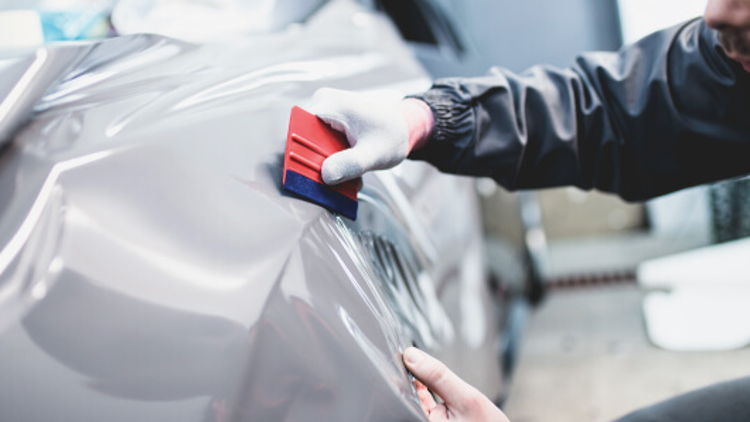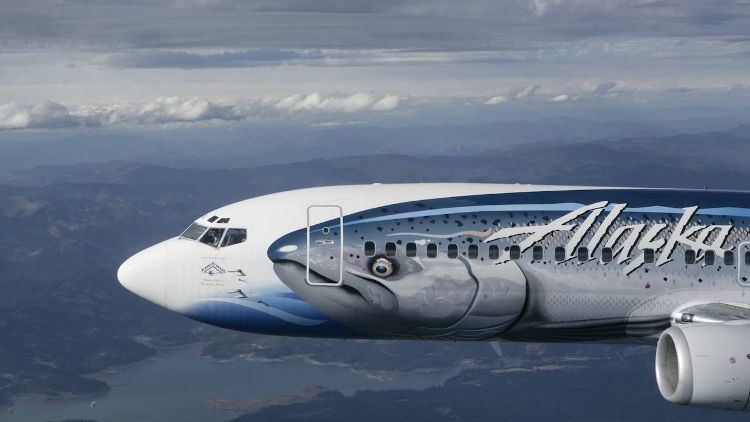Working in the sign and graphics industry, we’re often expected to think outside of the box. The last time I was at a conference, I was asked if it was possible to wrap ‘an item’ with a nice print or textile fabric.
This was a pretty broad question, knowing how diverse the answer could be. When I asked him what it was he wanted to wrap, he explained that he didn’t have anything specific in mind, he simply wanted to understand the possibilities, the potential.
Of course, there are endless options and methods, from shrink-wrapped bottles to aeroplanes and almost anything conceivable in between. I confessed, a comprehensive and clear answer would take some research.
After investigating the subject a little more, I discovered that many of my industry peers knew as little as I did. However, perhaps I did know a little more that I first thought.
Many years ago, I was responsible for vinyl applications of text and small graphics, but always on a flat surface. No stretching, no heating of the media, just application fluid and ‘off you go’.
The wrapping industry today is totally different. With years of evolution and product development, it’s the new and fashionable way to add an advertising or promotional graphic to almost any object. Traditional methods, such as hand painting, still have their place, but by the large we needed something more efficient and easier to deal with. Digital technologies now allow us to print and apply to trains, planes and automobiles, plus virtually anything else you can think of. Even point of sale objects can be wrapped to save on cost, take a look at the commercial soda fridges around the world, when they’re exchanged, a new vinyl is applied, keeping branding up to date and making it look like new again.
So, how does it work? Well it’s not as easy as one might think. The 3D element of the application means that simply creating a nice image in Photoshop or CorelDRAW is not going to cut the mustard, it needs to be scaled and sized. A template is needed to guide through the design process. These templates and applications are readily available on the internet and can make the job a lot easier.
The next thing to consider is the printing technology. Because the media needs to stretch in order to be applied, not all ink types will work well. Instead, a flexible ink, like UV-LED, solvent or Latex is needed.
Our next decision is which substrate? There are many reputable vendors offering specialty vinyl - 3M, Avery, Hexis, Orafoil to name a few. To decide which is best, it’s important to consider several factors – internal vs external application, does it need to be scratch resistant, how long will it be outside? Essentially, if the application is outdoors, has a lifespan of more than a few months or needs to be scratch resistant, the printed graphic will need to be laminated. It’s worth remembering that cast vinyl often used for wrapping is a bit thin, so laminating will also give a bit more body to work with.
Whether to laminate or not is just one consideration, the next decision is whether to opt for a standard monomeric vinyl or a cast film that is better for stretching, but is more expensive? If using a cast vinyl, the adhesive is also an important choice to make. A permanent adhesive does what is says on the tin - it’s there to stay and removing it will cause a headache. This is important to consider as lease vehicles can’t be wrapped when returned. It’s more likely a choice between a semi-permanent or removable adhesive.
When it comes to making the three choices – ink, media and adhesive, my recommendations are solvent, cast and semi-permanent with a laminate for protection. There is also a new adhesive technology available - bubble free or easy apply, where small channels of air on the adhesive side allow air to be pushed out evenly. The glue will spread out over a few hours and close all the channels, creating less or perhaps no bubbles at all.
Three big decisions made, but then there’s the application, again this is not easy. Have you ever tried to stick a 160cm x 120cm label on an object without folds bubbles or wrinkles? Well, the first time it will be near on impossible. Trust me, I have drama putting an A4 sticker on a car.

If you were lucky enough to witness my attempt at car wrapping at last year’s FESPA, you’ll know that it was a disaster. But there is a trick - use an application fluid! This soapy fluid will help to achieve the correct placement or application of the easy apply vinyl. Strong magnets should also be used to position the media, they’ll become a much-needed spare pair of hands. I would strongly recommend testing before wrapping the end product and seeking out professional guidance in advance. Luckily, many of the substrate suppliers offer courses in wrapping and application.
Wrapping certainly requires expertise. Take, for example, the wrapping of aeroplanes, this requires special skills and expert vinyl to resist temperatures ranging from -60° Celsius to +50° Celsius. Did you know that a plane shrinks and expands over 5cm per flight? This requires extremely careful selection of substrate and ink. Many manufacturers have been deeply involved in aircraft wraps, working closely with substrate suppliers and flexible UV-LED ink vendors. Today, it’s possible to supply the right solution to the aviation industry with the right homework and skill set.
Going up into the atmosphere: space exploration even has a need for stickers and these need to survive remarkable temperature changes. Just think, on the International Space Station, there are hundreds of graphics that must stay in place. Heading back down to earth, there’s plenty of opportunity to simply decorate home appliances, kitchen cabinets and even the garage door.
So, to the man at the exhibition many moons ago: You want to know what you can wrap? Anything! From the soles of your shoes to the future of space travel. But, before you begin, there are plenty of choices to make and lessons to learn.
Mike Horsten
Consultant and Freelance writer
texSmart.nl





